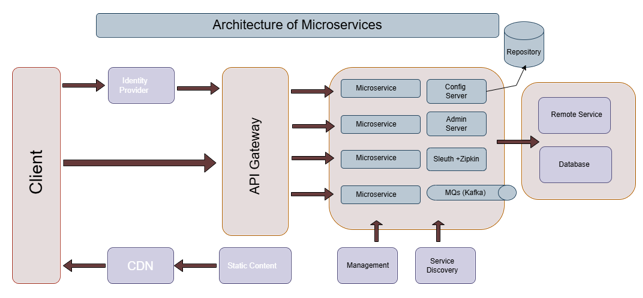In recent years, software architecture has evolved dramatically, reshaping the technological landscape and influencing development practices. From the early days of monolithic designs to today’s distributed microservices and serverless architectures, software architecture has shifted to accommodate the growing needs for scalability, resilience, and agility. This article dives into key elements in evaluating software architecture, guiding architects, engineers, and business stakeholders in choosing the best architectural approach for specific project needs.
The Evolution of Software Architecture
Software architecture began with structured programming, where applications were simple and the codebase relatively straightforward. As business demands grew, object-oriented programming (OOP) introduced modular designs, allowing developers to encapsulate data and logic in classes and objects. This evolution continued with component-based software engineering (CBSE), which emphasized reusability and independent development cycles.
Following OOP and CBSE, monolithic architectures emerged, allowing businesses to build comprehensive applications in a single codebase. However, as application complexity and scaling requirements increased, monoliths posed challenges. Service-oriented architecture (SOA) addressed some of these concerns by decomposing applications into networked services, which enabled more flexible scaling and maintenance. Today, microservices and serverless architectures dominate, with a focus on agile, independently deployable components that support rapid development and dynamic scalability.
Key Architectural Styles and Their Evaluation
1. Monolithic Architecture
Monolithic architecture is characterized by a single, unified codebase where all application components are interwoven. While this approach simplifies development and deployment, it limits scalability and creates maintenance challenges as the application grows.

- Advantages: Simplicity in development, easier testing, and centralized management.
- Challenges: Scalability issues, single-point failure risks, and difficulty in updating individual components without impacting the whole system.
- Best suited for: Small to medium applications with minimal scaling needs.
2. Service-Oriented Architecture (SOA)
SOA separates an application into distinct services, each handling specific business functions. These services communicate over a network, enabling enterprises to integrate diverse technologies across departments.

- Advantages: Scalability, flexibility, and support for heterogeneous environments.
- Challenges: Complex middleware management and potential performance bottlenecks.
- Best suited for: Large enterprises with varied applications requiring cross-departmental integration.
3. Microservices Architecture
Microservices take modularity to the next level, decomposing applications into a set of loosely coupled services that can be independently developed, deployed, and scaled.

- Advantages: Enhanced scalability, resilience, and support for continuous delivery.
- Challenges: Increased complexity in managing service dependencies, data consistency, and deployment orchestration.
- Best suited for: Dynamic, high-growth applications needing rapid iteration and robust fault tolerance.
4. Serverless Architecture
Serverless architecture abstracts infrastructure management entirely, allowing developers to focus solely on application logic. Code is deployed as functions, scaling automatically with demand.
- Advantages: Cost-efficiency, scalability, and reduced operational overhead.
- Challenges: Cold-start latency, limited execution duration, and vendor lock-in.
- Best suited for: Event-driven applications, IoT solutions, and applications with unpredictable or highly variable loads.
Criteria for Evaluating Software Architecture
1. Scalability
The ability to handle growth in users, data, or transactions is crucial. For businesses expecting high traffic and rapid growth, architectures like microservices and serverless provide independent scaling capabilities that avoid the limitations of monolithic scaling.
2. Flexibility and Modularity
As applications evolve, architectural flexibility determines how easily new features can be added or updated. Modular designs, such as those in SOA and microservices, enable separate teams to work on different components, expediting development and maintenance.
3. Reliability and Fault Tolerance
Applications must maintain availability despite failures. Microservices and event-driven architectures, for example, can isolate issues within individual services, preventing a failure from affecting the entire application.
4. Cost Efficiency
Resource utilization directly impacts costs. While monolithic architectures may initially seem cost-effective, they require heavy resources for scaling. Serverless, by contrast, follows a pay-as-you-go model, making it more cost-efficient for sporadic workloads.
5. Operational Complexity
As architectures become more distributed, complexity increases. Monolithic systems are easier to manage due to a single codebase, whereas microservices require orchestration tools and monitoring solutions to manage the inter-service dependencies effectively.
Conclusion
Selecting the right software architecture involves balancing flexibility, scalability, and reliability with operational complexity and cost. Each architectural style offers distinct benefits and challenges, with monolithic approaches suitable for smaller projects, SOA for large, integrated systems, microservices for high-growth, dynamic applications, and serverless for event-driven or variable-demand applications. A well-chosen architecture can make all the difference in how an application performs, scales, and adapts to future business needs.








